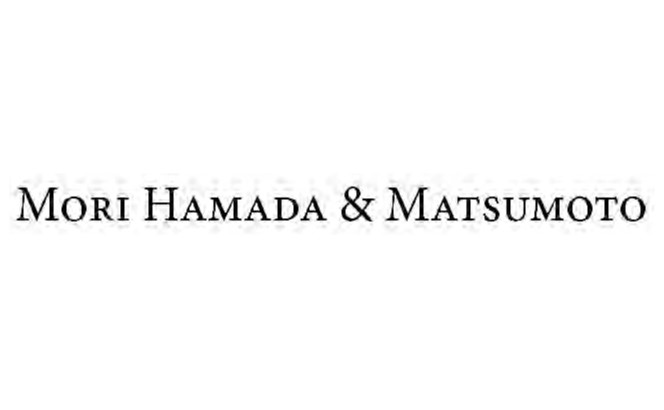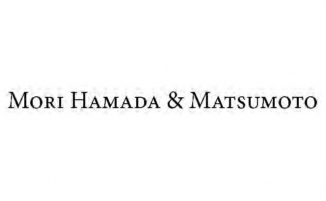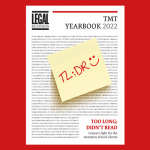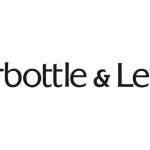Yoshifumi Onodera of Mori Hamada & Matsumoto explains the current developments in intellectual property law within the TMT sphere
What are key trends on intellectual property right (IPR) protections in TMT areas in Japan?
Key trends I would like to introduce to you are as follows:
- IPR protections in the metaverse in Japan
- METI’s guideline in relation to SEP/FRAND licences
- New IP High Court decision on multi-jurisdictional patent infringement
- Amended Trade Mark Act introducing remote procedures
- Future plans for IP system reforms
What should IPR owners do to protect their IPRs in the metaverse?
As in many other jurisdictions, how to protect IPRs in the metaverse is a hot topic in Japan. As the metaverse is still developing, a whole picture is still unclear, however, it is certain that all kinds of IPRs, patent, design patent, trade mark and copyright, are relevant. Therefore, it is important for all the IPR owners that they should file a proper patent, design and trade mark applications. Especially, we recommend all brand owners file additional trade mark applications with designated goods and services covering potential activities in the metaverse as soon as possible.
The key issue is whether or not existing trade marks originally focusing on physical goods and services would also work in the metaverse? If the products existing in the metaverse are just virtual appearance of the physical products, the original trade mark covering the physical goods would also protect the product in the metaverse. However, these virtual representations of physical products are also considered as computer software, capable of representing those products in a digital environment. Therefore, we recommend trade mark owners file additional trade mark applications to adapt their rights to this new digital environment, more specifically, to resort to classes 9, 35 and 41 to extend the protection to the metaverse.
Developments in telecommunication, especially SEP/FRAND-related licensing issues in Japan
In recent years, SEP/FRAND-related disputes have arisen worldwide. Therefore, it is crucial for Japan to consider measures to resolve such disputes efficiently. Under such the circumstances, on 31 March 2022, the Ministry of Economy, Trade and Industry (METI) of Japan established the ‘Good Faith Negotiation Guidelines for Standard Essential Patent Licenses’, which are the norms of good faith negotiations provided by the Japanese government to be followed by SEP holders and implementers involved in SEP licensing negotiations, including Japanese patents.
‘We recommend all brand owners file additional trade mark applications with designated goods and services covering potential activities in the metaverse as soon as possible.’
In accordance with the Guidelines, on 20 July 2022, the Japan Patent Office (JPO) released the Revision of ‘The Guide to Licensing Negotiations involving Standard Essential Patents’, which was formulated in 2018 and has been established with those involved in the discussion of standard essential patents.
Both the Guidelines and the Guide are not legally binding and do not guarantee that, even if followed, negotiations can be judged to be in good faith in each individual case as there are no clear global rules for SEP licensing negotiations. However, as it is expected that Japanese judges will respect the Guidelines and Guide, we recommend parties negotiating with other parties in this area should carefully follow the Guideline and the Guide.
Developments in area of patent case law in 2022
In the recent IP High Court case introduced here, the plaintiff, which holds a patent for a ‘comment distribution system’ invention, claimed the defendant’s system for an online commented video distribution service fell within the technical scope of the plaintiff’s invention, and that the defendant’s transmission of files from its server located in the United States to users in Japan infringed their patent as it was a ‘production’ of the above system.
The Tokyo District Court dismissed the plaintiff’s claims in the first instance. But on appeal, the Intellectual Property High Court changed the original judgment and allowed the plaintiff’s claims on 20 July 2022.
‘As it is expected that Japanese judges will respect the Guidelines and Guide, we recommend parties negotiating with other parties in this area should carefully follow the Guideline and the Guide.’
The IP High Court’s decision, while assuming that videos were being distributed from a server that was outside Japan, held that in today’s digital society, it would be contrary to justice to allow a company to easily escape liability for patent infringement by, for example, moving part of its facilities (such as servers) outside of Japan. The court also held that, even if only some elements involved in working the patented invention were completed within the territory of Japan, the Japanese patent right may be effective if, from a substantive and overall perspective, the work can be evaluated as having been carried out within the territory of Japan.
Recent developments in the Trade Mark Act of Japan
The amended Trade Mark Act, which introduced a web oral hearing system and an electric notification system, and which strengthened a trade mark enforcement system used by customs, entered into force on 1 April 2022. The Japan Patent Office (JPO) continues to make great efforts to strengthen the trade mark examination system to prevent increasingly long examination periods; for purposes of context, the number of primary examination notifications (first actions) in 2021 increased by 23.3% from the number seen in the previous year.
Future plans for IP system reforms
The JPO organised a panel that published a report on 30 June 2022 on a desirable intellectual property system to promote the utilisation of intellectual property, which proposed the following amendments:
- revision of the definition of ‘working’ of a patent to solve certain issues in enforcing patent rights in the artificial intelligence and internet-of-things areas (in particular, under the current law, a provider of software-as-a-service may avoid patent infringement related to software by placing programs in servers outside of Japan’s territory, or through dividing programs between multiple service providers);
- whether or not punitive damages and profit-discharge damages will be recognised by the Patent Act in the future; and
- revision of a provision in the Patent Act that presumes negligence on the part of an infringer, when a patentee makes a claim for damages.
- whether to introduce a letter of consent, which is issued by the holder of a trade mark right to the cited mark who agrees on both the use and registration of the applicant’s mark to overcome a refusal in a Japanese trade mark prosecution.
- whether to relax the requirements for the registration of marks containing the name of another person based on the IP High Court decision in the Matsumotokiyoshi case.
Author
YOSHIFUMI ONODERA
Yoshifumi Onodera has been focusing on both intellectual property and TMT for over 20 years since he was admitted to the Daini Tokyo Bar Association in 2000. With his scientific background, he has handled matters that require a high degree of technical expertise. He also handles a number of IP-related matters involving not only Japan, Europe and the US but also China and other Asian countries. He has been recognised as a leading lawyer in Japan in major ranking tables, such as The Legal 500 Asia-Pacific, Chambers Global, World Trademark Review 1000, IAM Patent 1000, Best Lawyers in Japan, IP STARS, Asia IP and Who’s Who Legal.
MORI HAMADA & MATSUMOTO
16th Floor, Marunouchi Park Building
2-6-1 Marunouchi
Chiyoda-ku
Tokyo 100-8222
Japan
Tel: +81 3 5223 7769
Fax: +81 3 5223 7669
yoshifumi.onodera@mhm-global.com
www.mhmjapan.com/en














